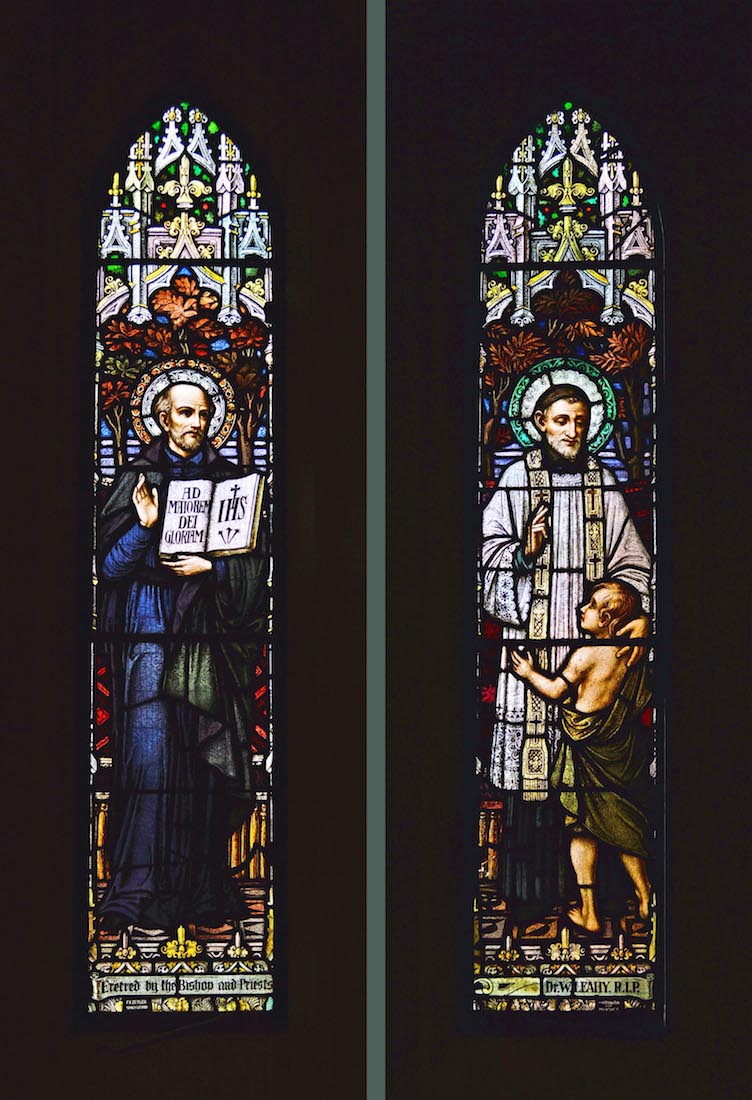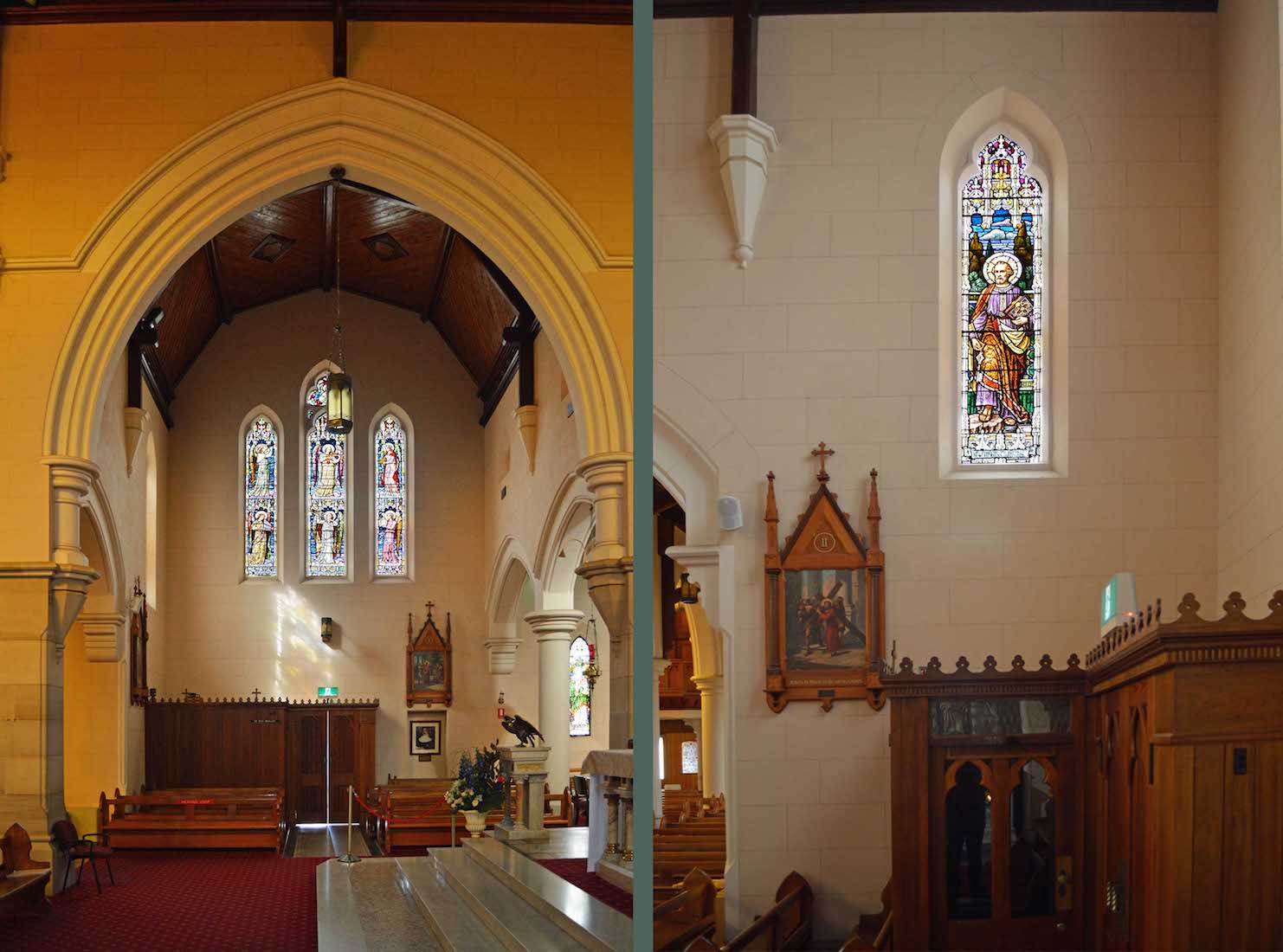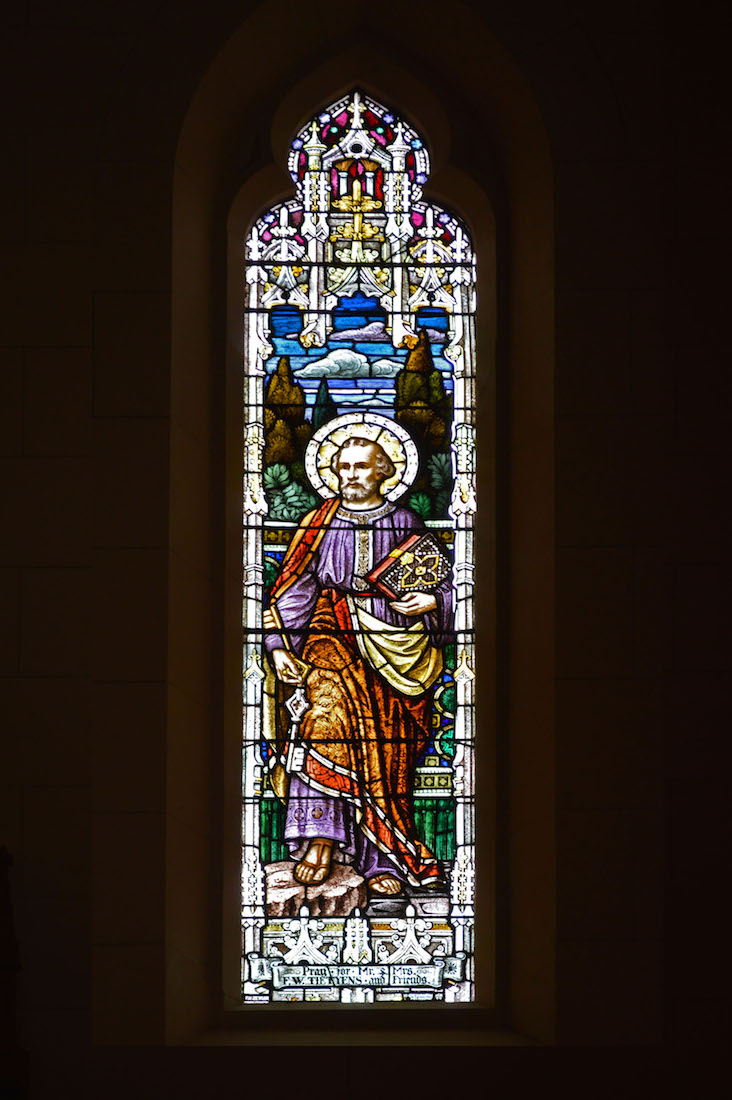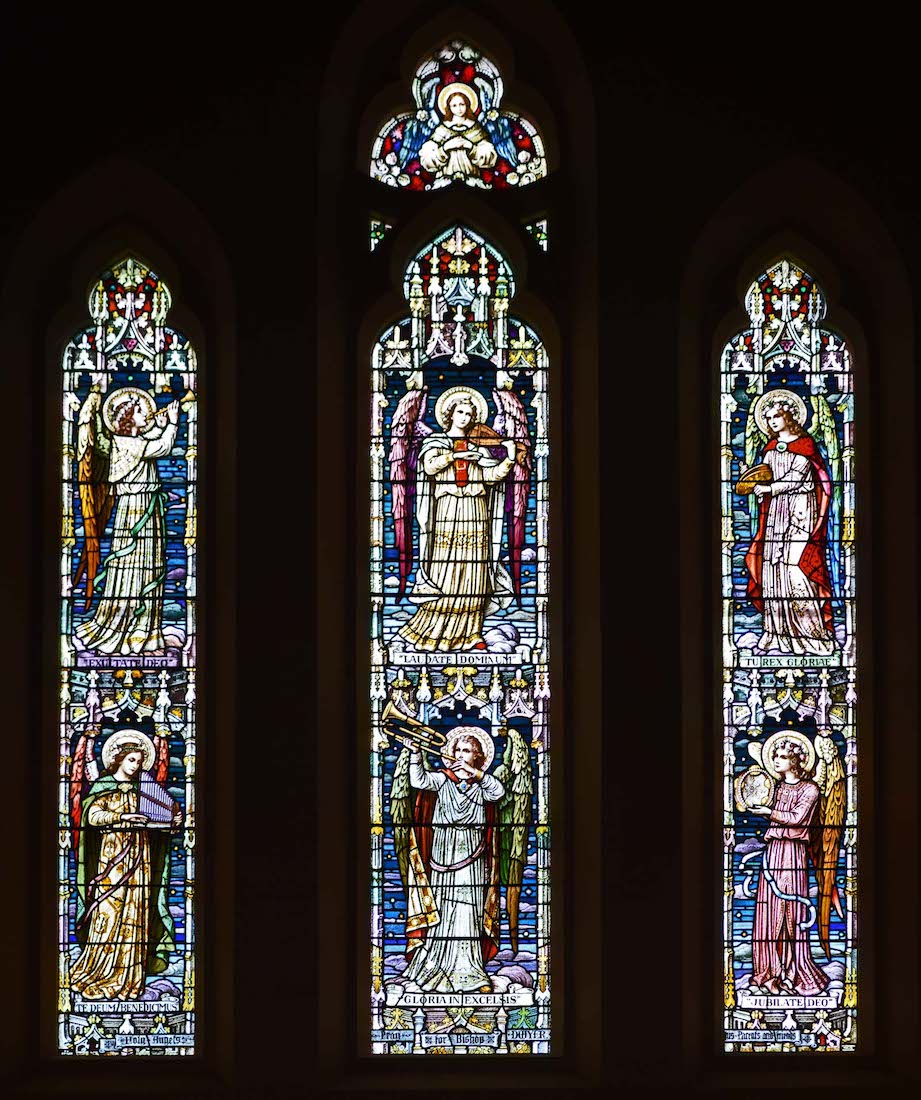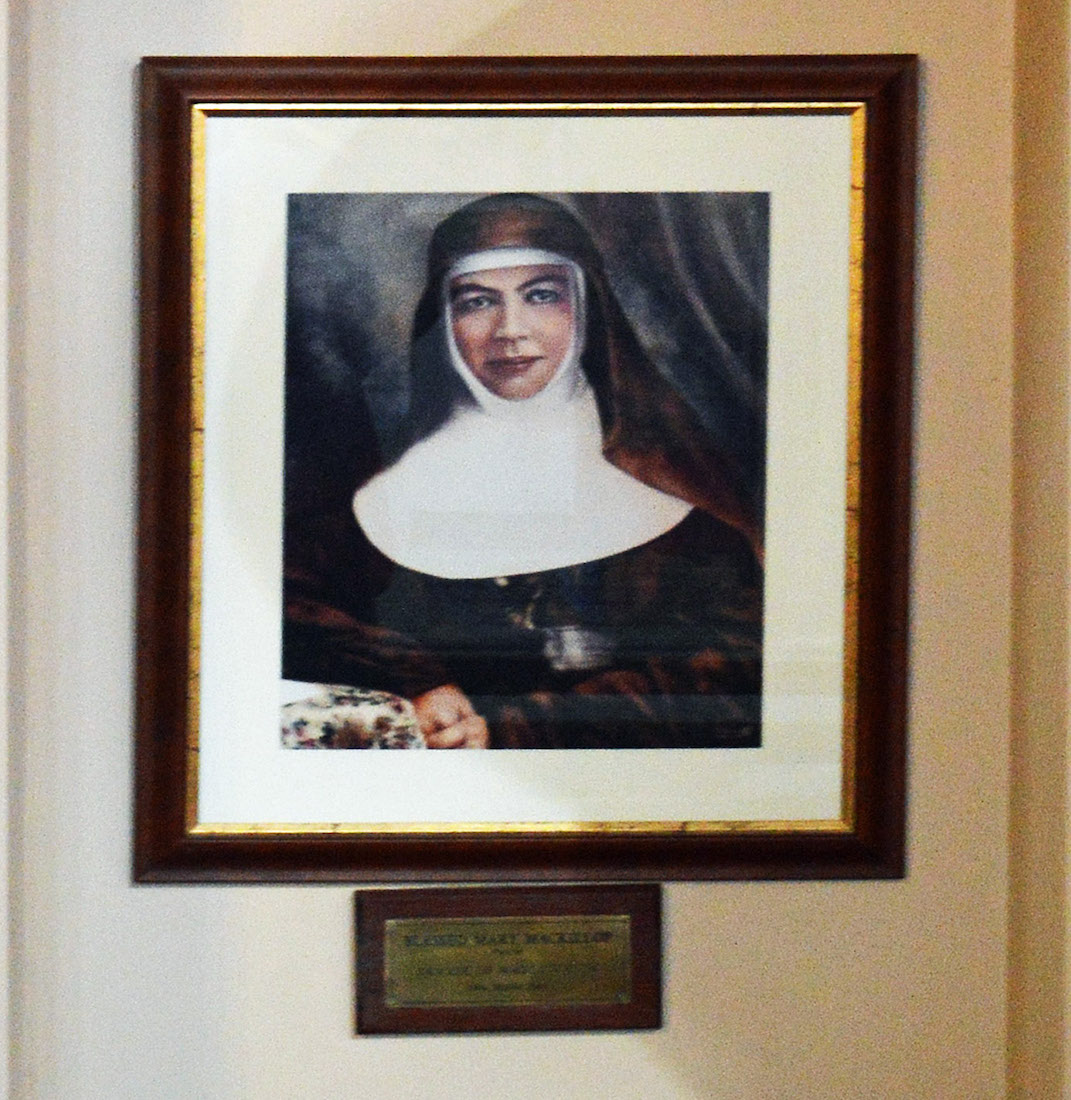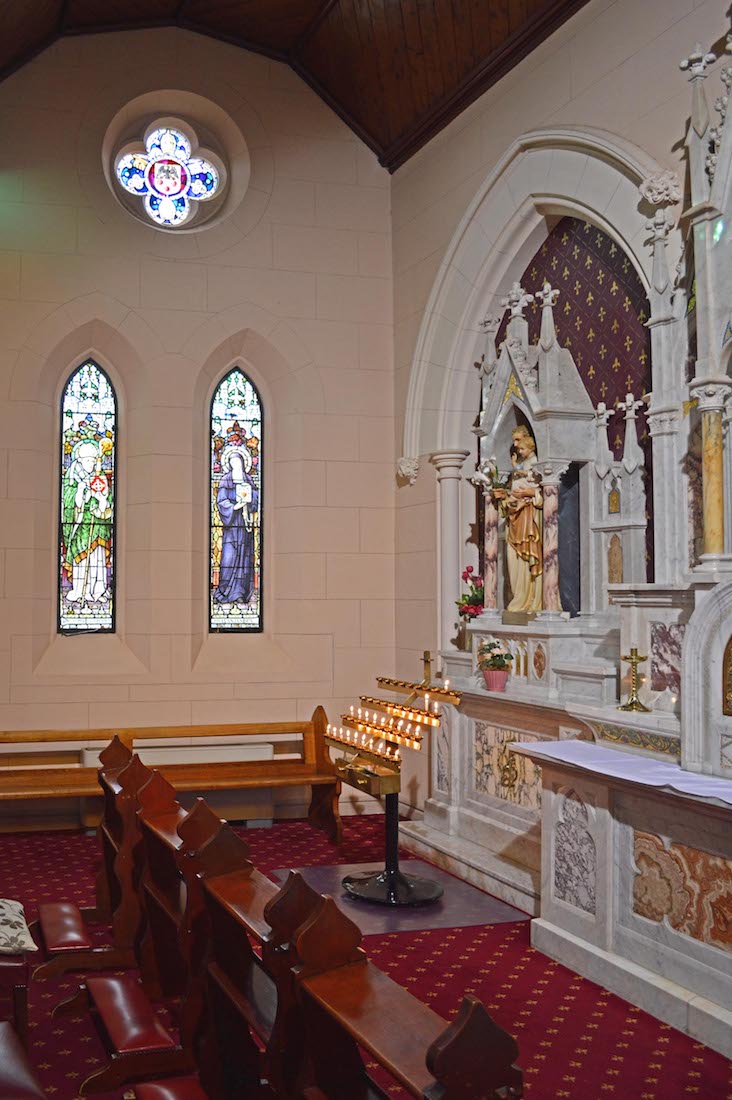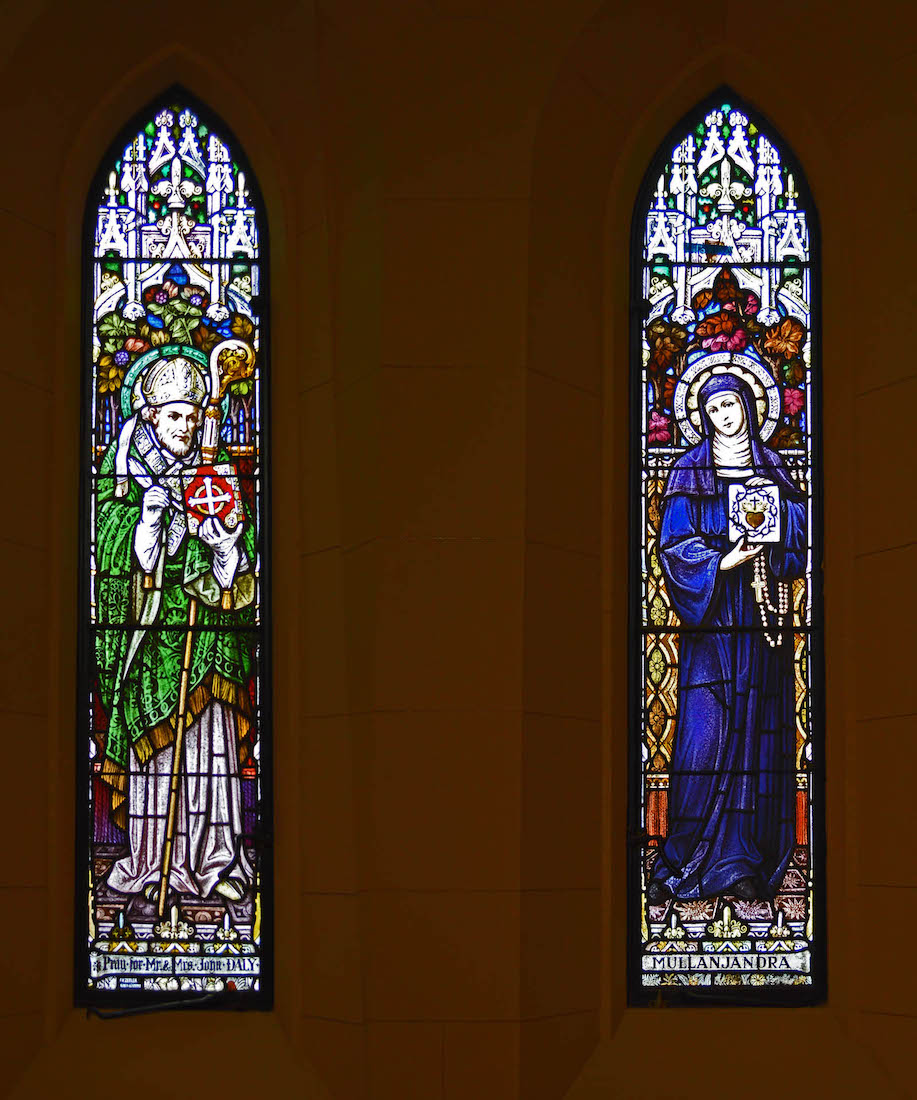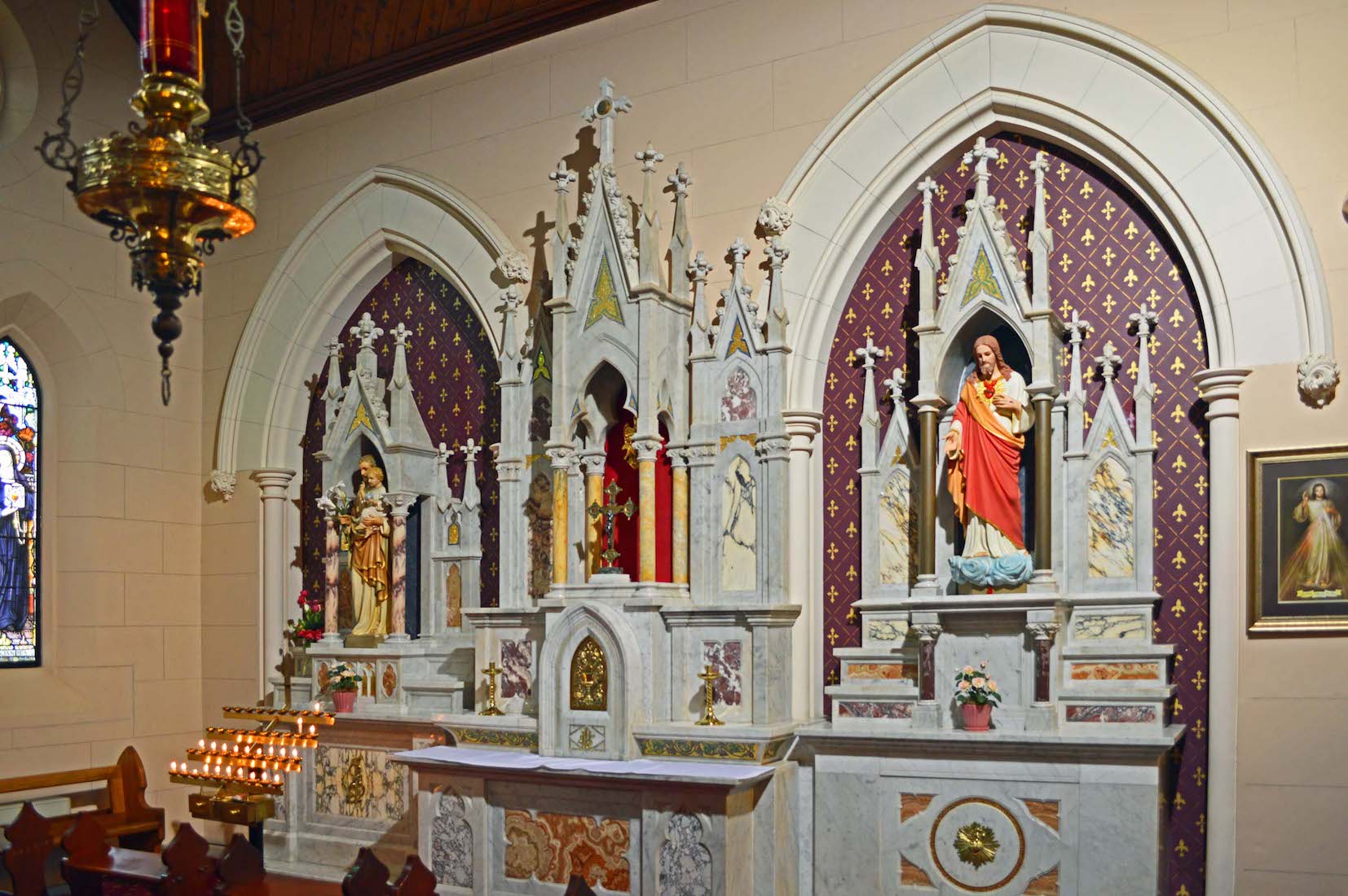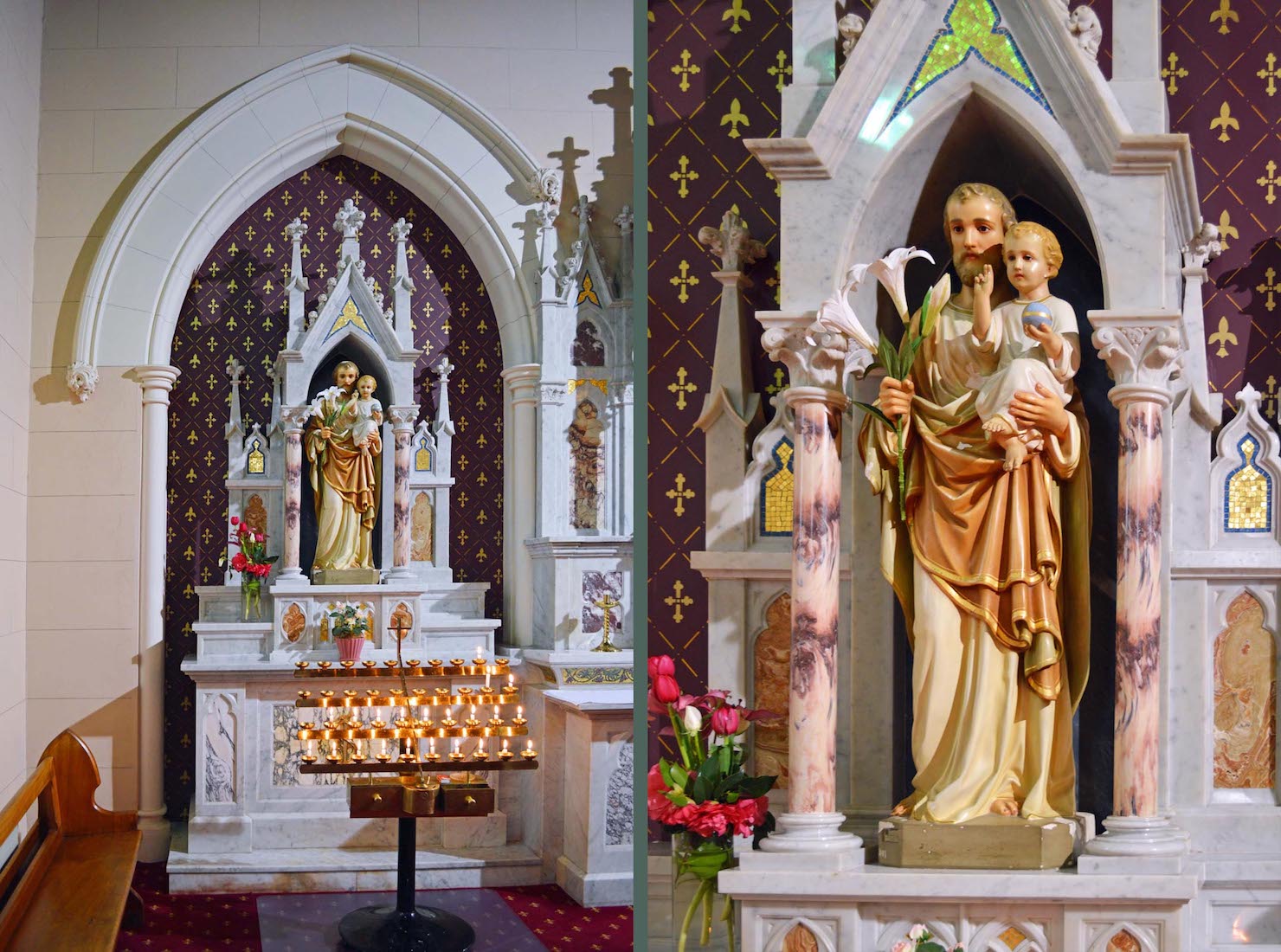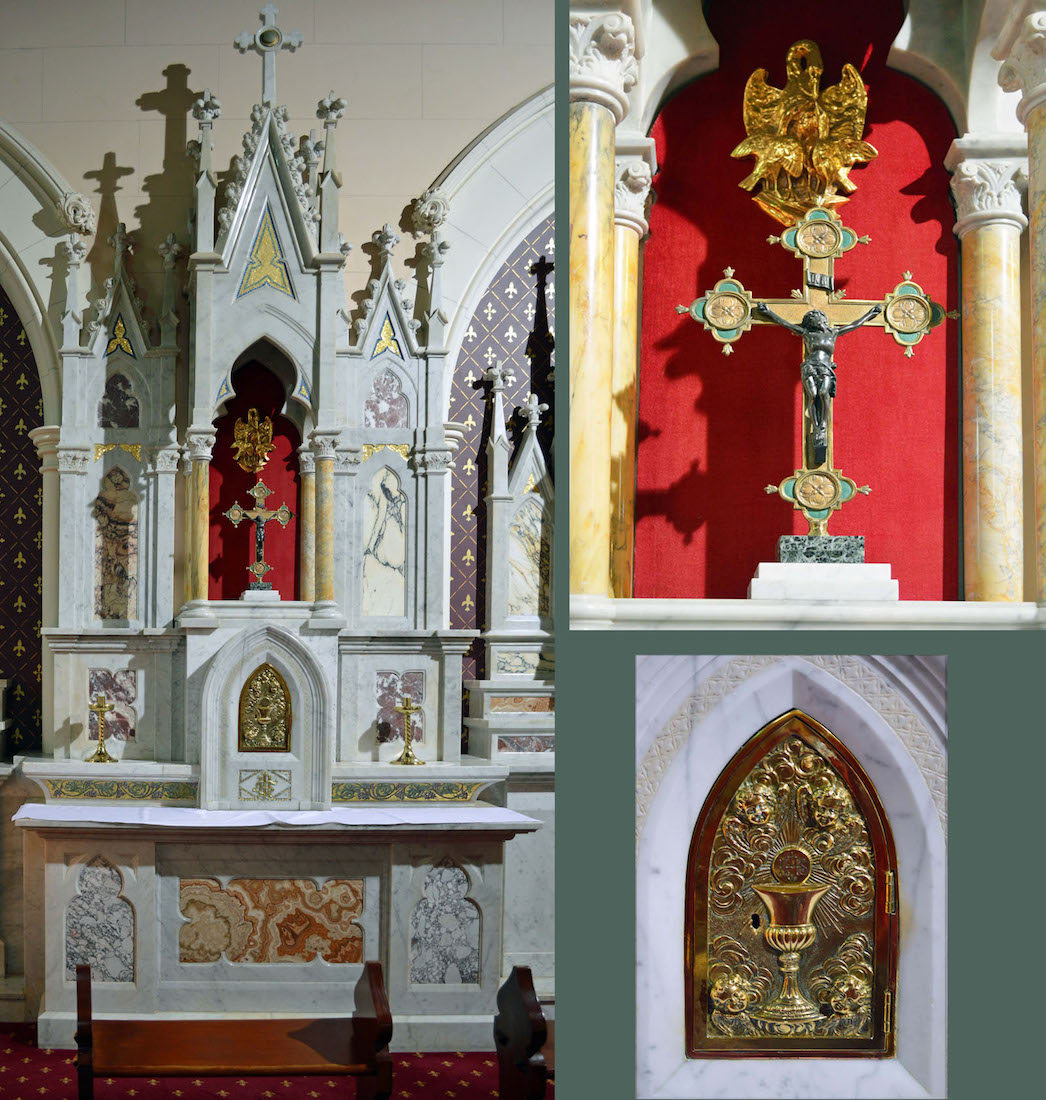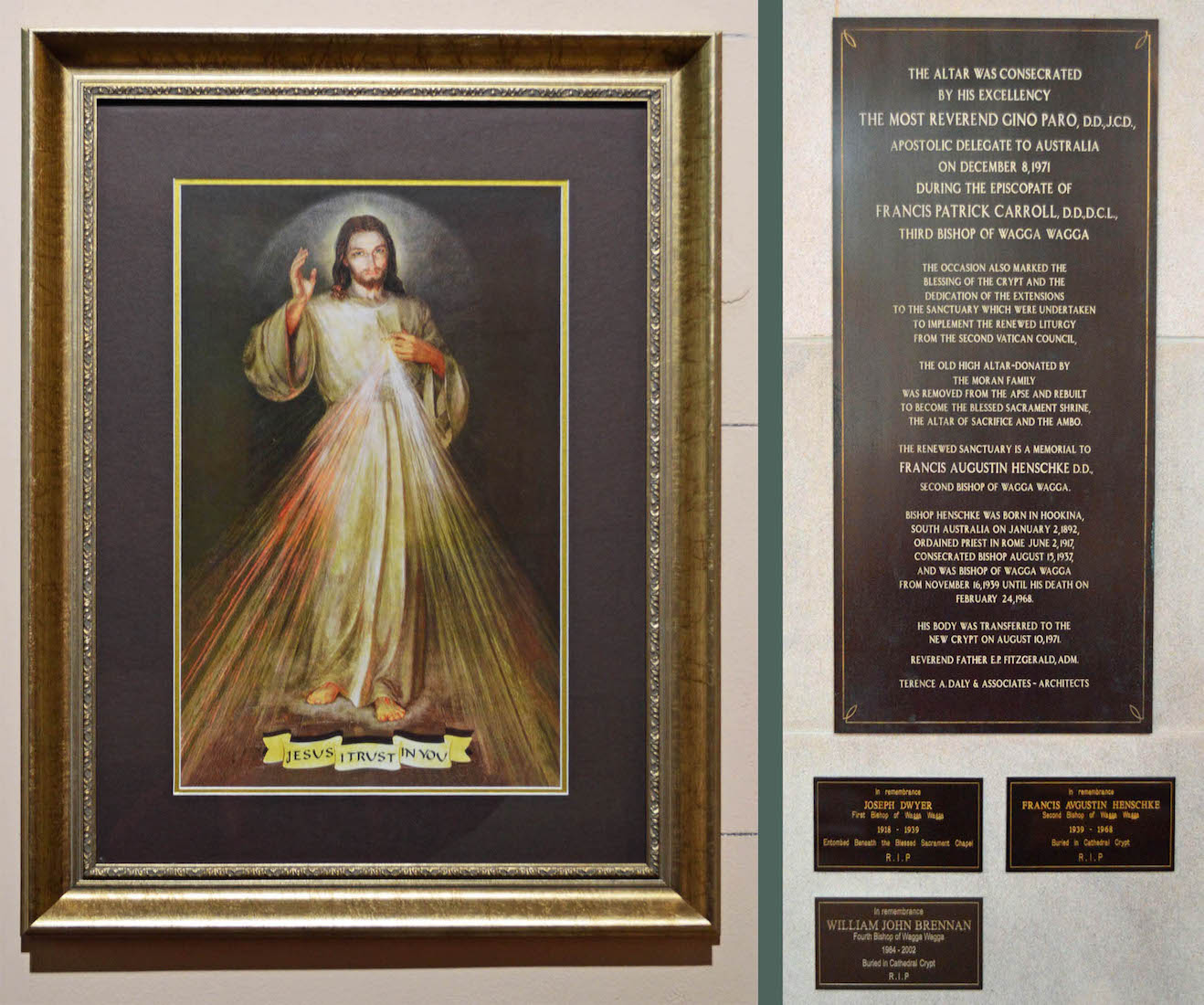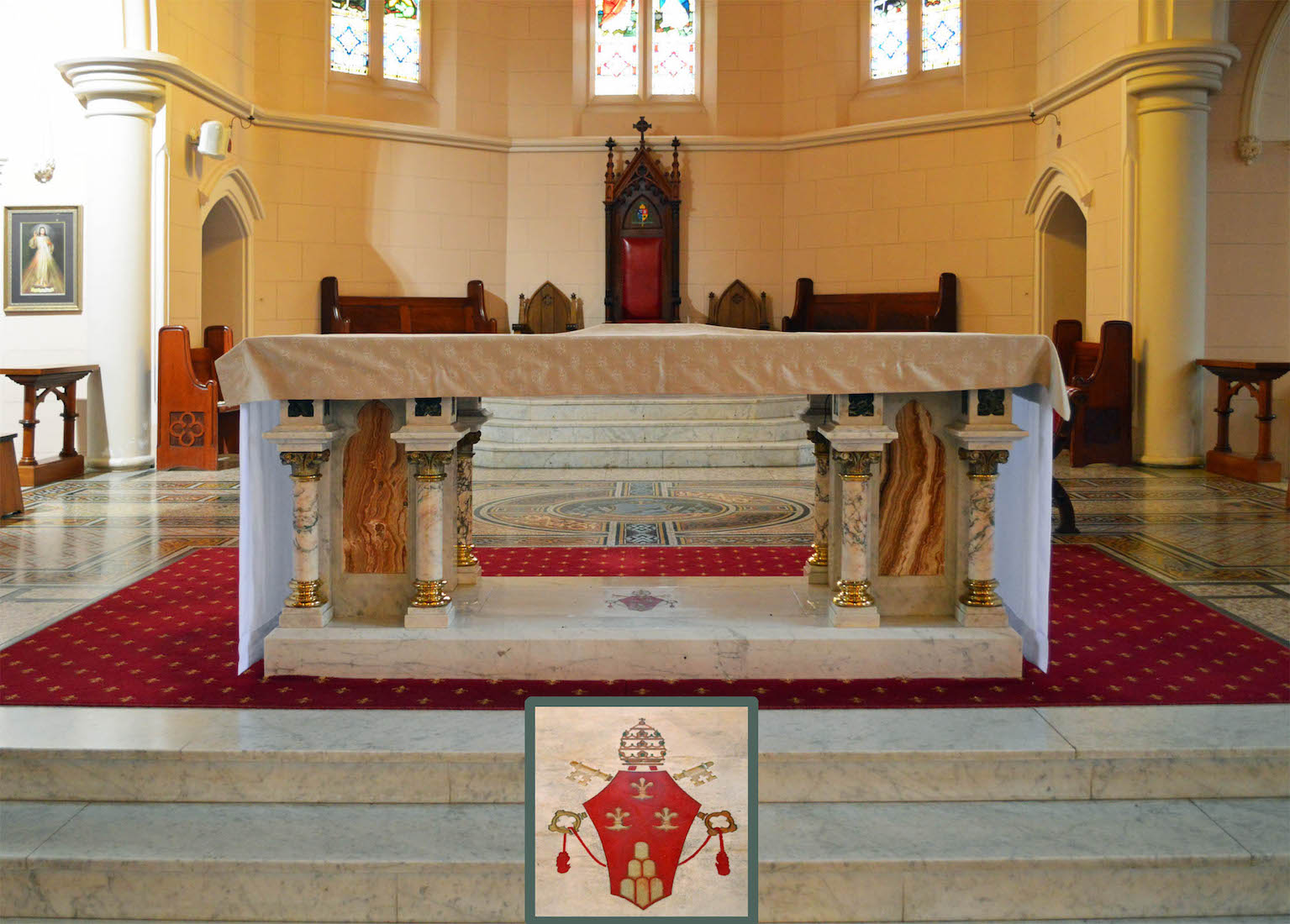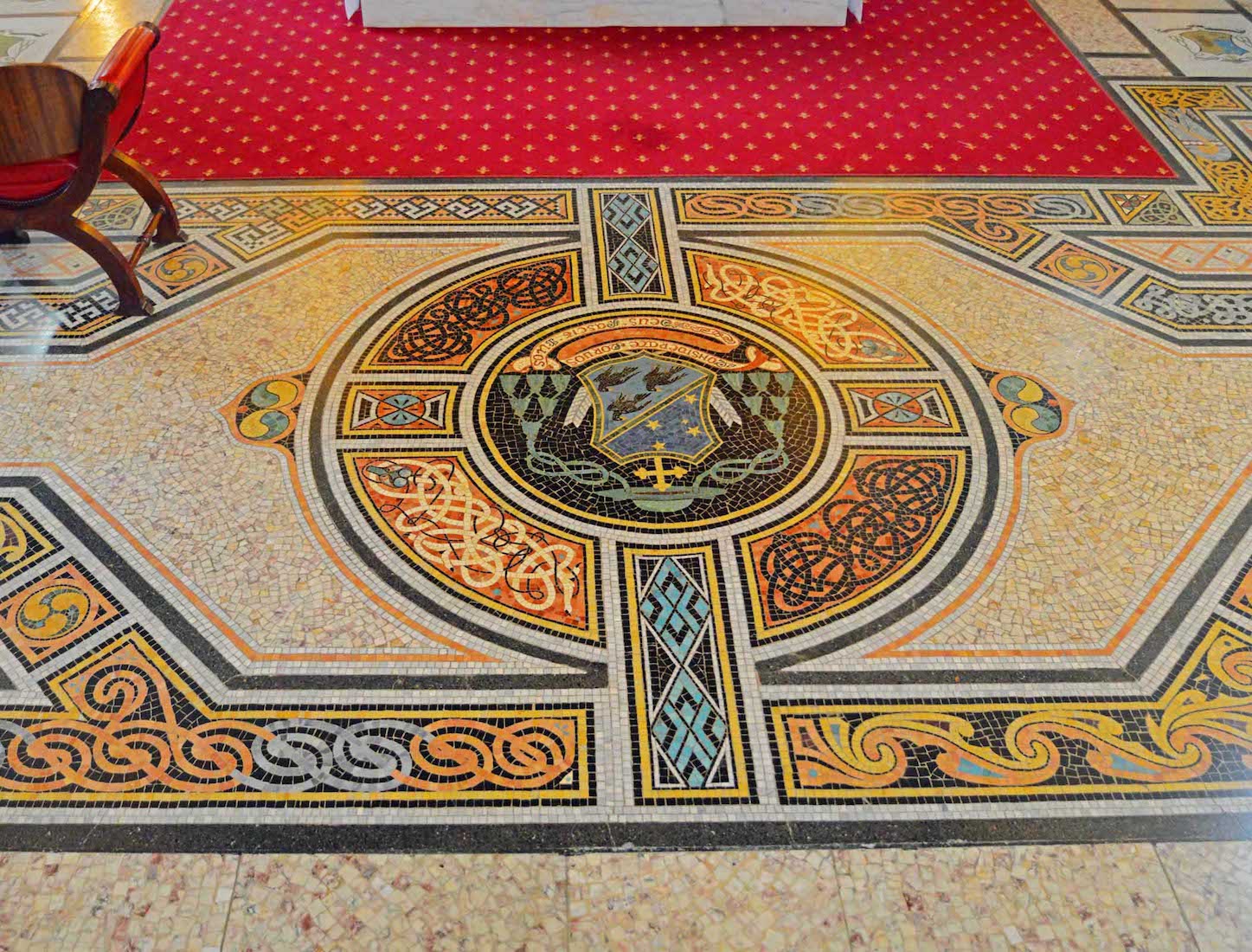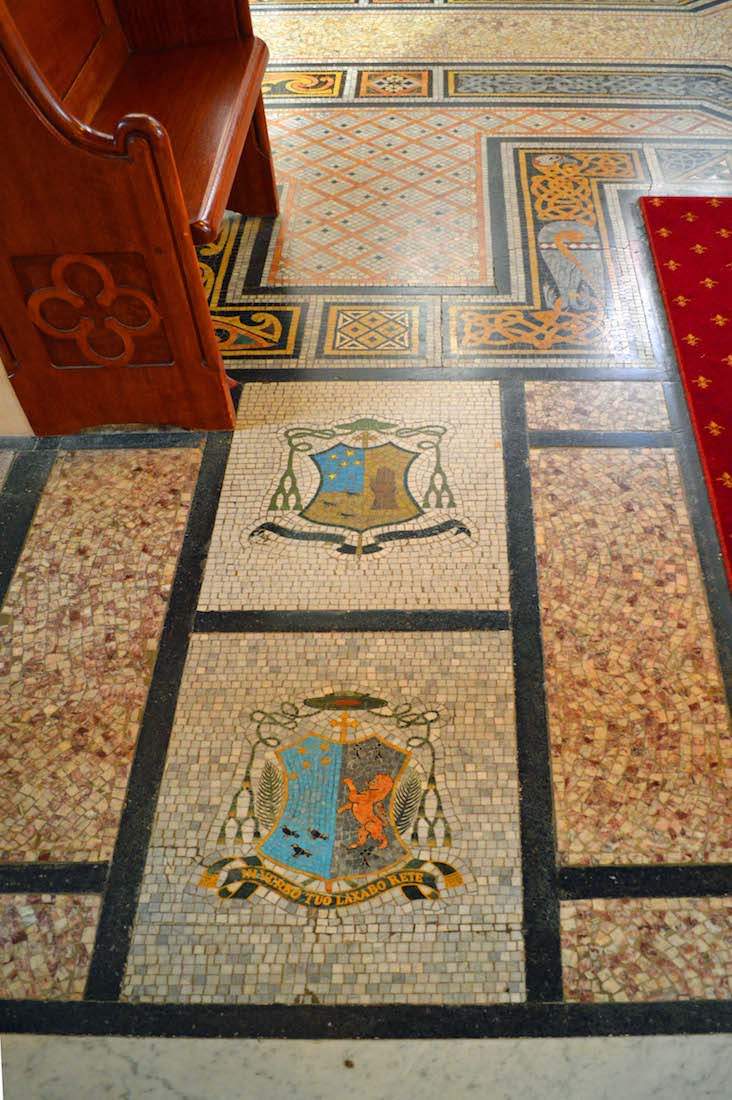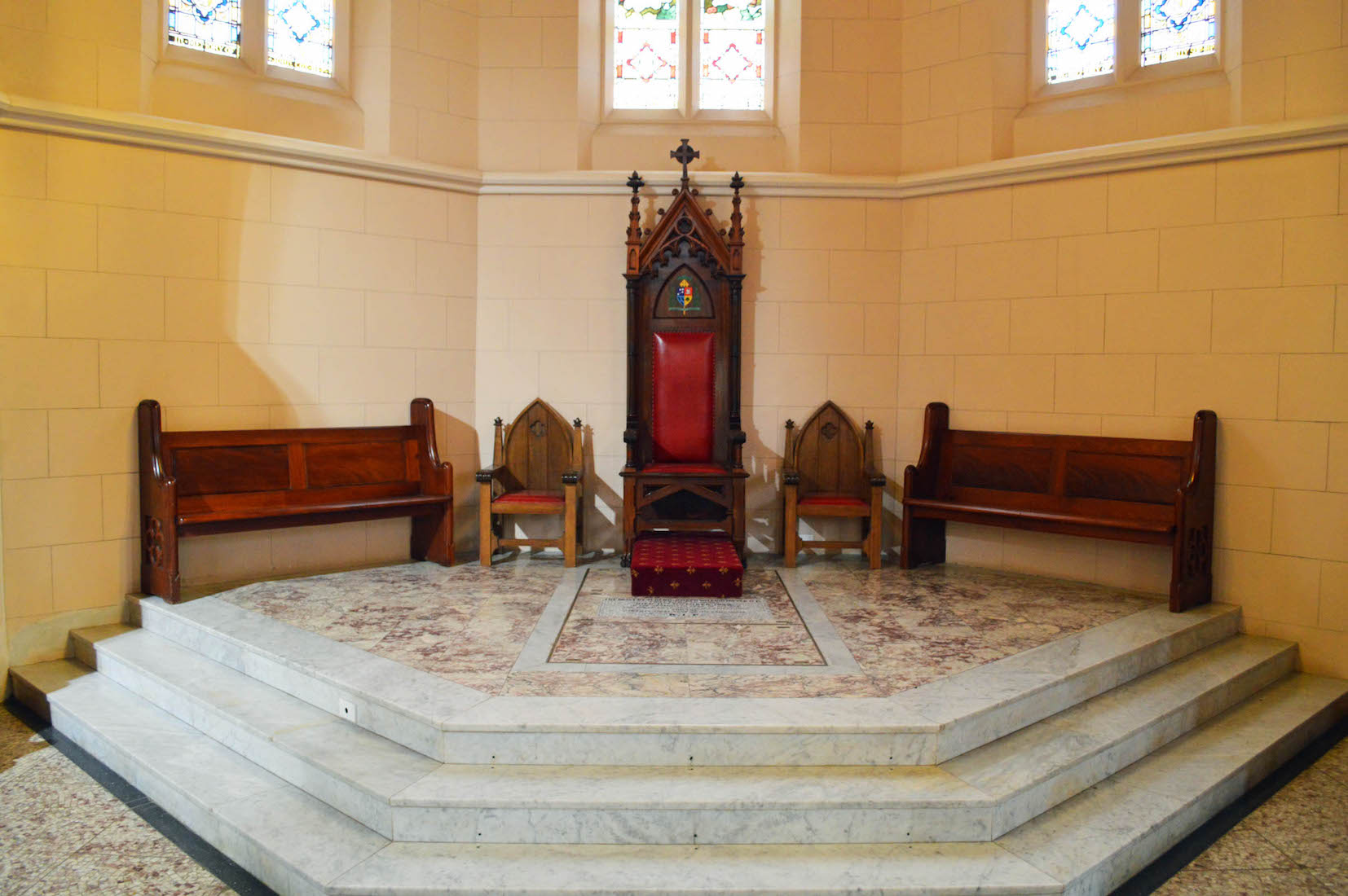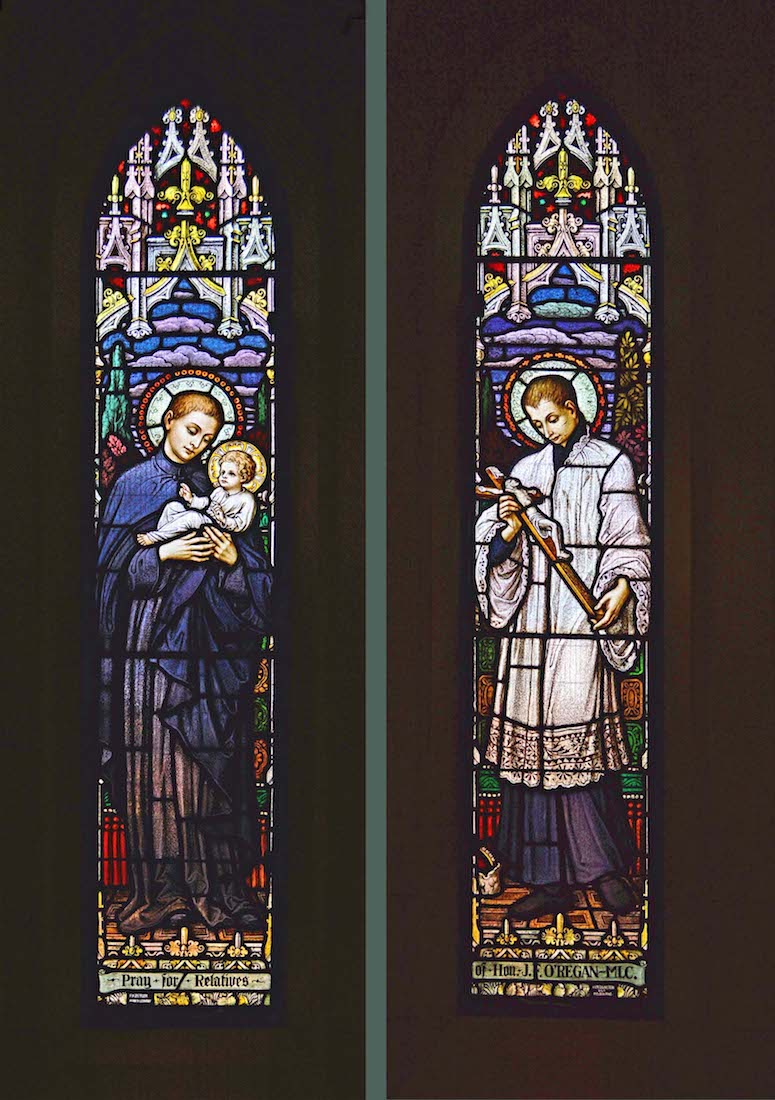
The third set of North nave windows carry the inscription ‘Pray for relatives of Hon. J. F. O’REGAN MLC’. The window on the left depicts Mary holding the baby Jesus. The window at right shows a saintly figure contemplating a crucifix. So perhaps this pair of windows seeks to depict the beginning and end of the earthly life of Jesus. INDEX
22. NORTH NAVE
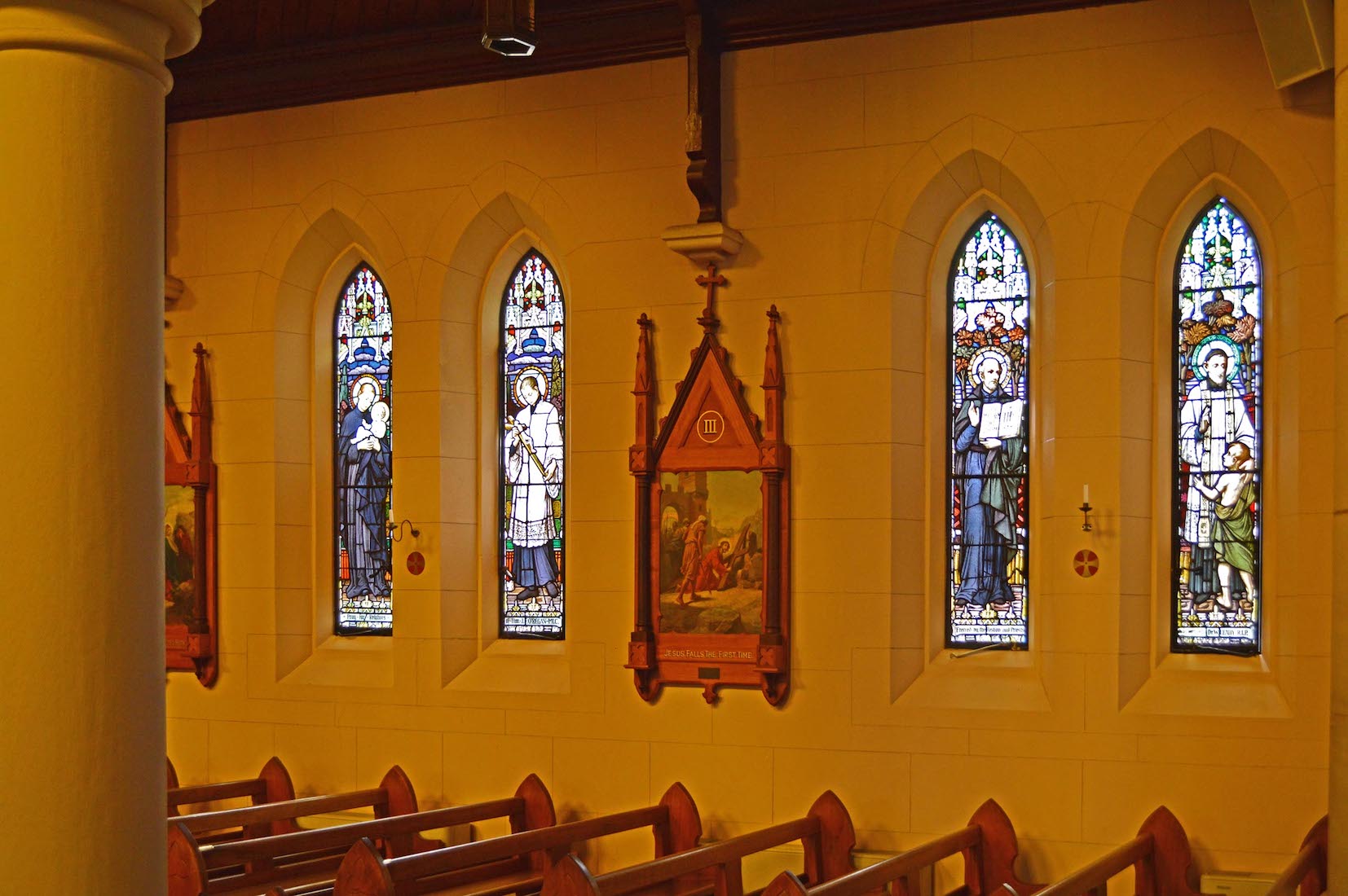
In the nave, pairs of windows are interspersed with the Stations of the Cross.
23. NORTH NAVE WINDOWS IV
The content of these windows is less clear. The inscription at the base reads; ‘Erected by the Bishop and Priests: Dr W. LEAHY R.I.P’ The windows show two saintly figures. The figure at left holds a book with the writing ‘Ad Majorem Dei Gloriam IHS’ (For the greater glory of God, JESUS), and the figure at right is blessing a child.
25. NORTH TRANSEPT WEST WINDOW
The inscription on this window is: ‘Pray for Mr & Mrs F. W. TIETYENS and Friends’. The window depicts St Peter, as is made clear by the Keys of the Kingdom which he is holding. This incident is related in Matthew 16:18.
26. NORTH TRANSEPT WINDOWS
This delightful set of three lancet windows depicts six angels playing old time musical instruments in worship of God. The inscription at bottom reads: ‘Holy angels • Pray for Bishop DWYER • His Parents and Friends.’ The instruments? Trumpet, violin, cymbals, portable organ(?) , trombone, and castanets.
27. ST MARY McKILLOP
This photograph is on the North wall below one of the Stations of the Cross. St Mary of the Cross MacKillop, was an Australian nun who has been declared a saint by the Catholic Church. Of Scottish descent, she was born in Melbourne, but was best known for her activities in South Australia. Together with Reverend Julian Tenison Woods, she founded the Sisters of St Joseph of the Sacred Heart (the Josephites), a congregation of religious sisters that established a number of schools and welfare institutions throughout Australasia, with an emphasis on education for the rural poor.
29. THE ROSE WINDOW
This window is a tribute to Pope Pius XI whose coat of arms features the upper mitre, crossed keys, and central design. The words read: The year of Pius XI, Chief Bishop (Greatest Pontiff), and the date is presumably 1922, as Pius XI reigned from 1922 to 1939.
30. LANCET WINDOWS
The inscription across the base of these lancet windows is: ‘Pray for Mr & Mrs John DALY • MULLANJANDRA’. It appears that John Daly came from Mullanjandra in NSW. he was a colourful character: grazier, golfer and song writer. The bishop at left may be St Patrick, the lady at right Margaret Mary Alcoque?
31. BLESSED SACRAMENT CHAPEL
The East wall of the Chapel of the Blessed Sacrament is very impressive. At left is a shrine to Joseph with the infant Jesus, at centre an altar with crucifix and aumbrey, and at right a shrine with Jesus and the Sacred Heart. A sanctuary lamp hangs above the space.
32. ST JOSEPH SHRINE
The lily is associated with St. Joseph, spouse of Mary, through an ancient legend that he was chosen from among other men by the blossoming of his staff like a lily. Likewise, the biblical passage, ‘The just man shall blossom like the lily’ (Hosea 14:5) is applied to St. Joseph in the liturgy of the Roman Catholic Church for his feast day, March 19th. Thus, in religious art the lily is used as an emblem of St. Joseph.
33. CHAPEL ALTAR
Central to this display is this white marble altar and reredos. A small crucifix stands against a dark red background. Above the crucifix is a golden bird (a stylized pelican?) feeding her young. The golden aumbry below is used to store the reserved Eucharistic elements.
34. SACRED HEART SHRINE
Jesus is shown here with his heart exposed. The devotion to the Sacred Heart is one of the most widely practiced and well-known Roman Catholic devotions, taking Jesus Christ's physical heart as the representation of his divine love for humanity.
35. PAINTING AND PLAQUES
The painting of Christ with rays of light streaming from his heart carries the words ‘Jesus I trust in you’. Nearby is this array of plaques. The large plaque commemorates the consecration of the altar in 1971. The smaller plaques are in memory of Joseph Dwyer, Francis Henschke and William Brennan – 1st, 2nd and 4th Bishops of Wagga Wagga.
36. EAGLE
It is common practice in churches and cathedrals to have a lectern with an eagle bearing the Scriptures. The eagle was thought to be the bird approaching closest to heaven. I think they often look rather mean!
37. ALTAR
The marble high altar is placed forward in the Cathedral in line with a decision of Vatican II. This stated that where possible, the high altar is to be placed in such a way that Mass may be offered by the priest facing the people, with room left to allow the priest to move around it. We notice that the coat of arms of Pope Paul VI is inscribed on the base of this altar.
38. MOSAIC FLOOR
The sanctuary floor is covered with beautiful mosaic tiling. At centre is the coat of arms of the Wagga Wagga Diocese with a central shield bearing the Southern Cross and three crows. The actual coat of arms bears the inscription: ‘Considerate corvos • Deus pascit suos’ which translates to ‘Observe the crows • God feeds them’.
39. MOSAIC CRESTS
The mosaic tiling continues alongside the altar, depicting here two related coats of arms.
40. CATHEDRA SETTING
The Eastern end of the sanctuary is unexpectedly plain: a stepped marble platform supporting the cathedra, which is flanked by two sedilia (seats for the clergy) and two pews.


